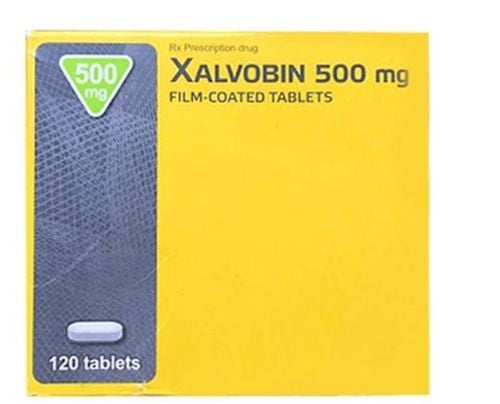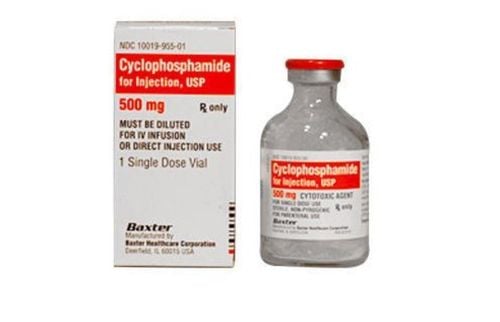This is an automatically translated article.
Ponatinib is also known as Iclusig. It is used in adults to treat a type of blood cancer called chronic myeloid leukemia, or lymphoblastic leukemia.
1. What is Ponatinib?
Ponatinib, also known as Iclusig, is a tyrosine kinase inhibitor. Kinase is an enzyme that promotes cell growth. There are many types of kinases that control different stages of cell growth. By blocking a specific enzyme from working, Ponatinib can slow the growth of cancer cells.2. How to use Ponatinib?
Ponatinib is in the form of tablets and is not affected by food. You can take it directly, with or without food, without affecting the effect of the drug. You should take Ponatinib at the same time of day to minimize the chance of forgetting.
In the event of a missed dose of Ponatinib by less than 12 hours, the missed dose should be used, then resume the usual dosing schedule.
It is important to make sure that you are taking the correct dose of Ponatinib each time.
3. Ponatinib side effects
There are several things you can do to control the side effects of Ponatinib. Here are some of the most common or important Ponatinib side effects:
3.1. Thrombosis, stroke, and heart attack Ponatinib may increase your risk of blood clots, stroke, and heart attack. Some clinical signs that warn of an increased risk of thromboembolism may include: swelling, redness or pain in the extremities, pain or pressure in the chest, pain in the arms, back, neck or jaw, difficulty breathing, numbness or weakness on one side of the body, trouble speaking, confusion or changes in mental status. You should tell your treating doctor if you have a history of blood clots before, as you may need prophylactic medication.
3.2. Cardiovascular problems Ponatinib can cause or worsen pre-existing heart problems including congestive heart failure, restrictive cardiomyopathy, decreased heart function, and heart attack. Some clinical signs suggest an increased risk of cardiovascular problems such as sudden weight gain or swelling in the ankles or legs. If you have pain or tightness in your chest, pain in your left arm, back or jaw, sweating, difficulty breathing, rough skin, nausea, dizziness or lightheadedness, seek medical attention immediately. correct layout.
3.3. Ponatinib can cause liver toxicity, which your doctor can monitor using blood tests, also known as liver function tests. If you develop elevated liver function tests, your doctor may reduce your dose or stop the medication.
Some clinical signs warn of yellowing of the skin or eyes, dark or brown urine or pain in the abdomen, as these may be signs of liver toxicity.
3.4. High blood pressure Ponatinib can cause high blood pressure. When treated with Ponatinib, you should actively check your blood pressure regularly during treatment. Any hypertensive condition requires appropriate treatment. If the hypertension is not controlled, the drug can be discontinued.
3.5. Low white blood cell count or leukopenia White blood cells (WBC) are very important to fight infection. While being treated for cancer, specifically ponatinib, your white blood cell count may drop, putting you at higher risk of infection. You should tell your treating doctor if you have a fever with a temperature higher than 100.4°F equivalent to 38°C accompanied by a feeling of sore throat or cold, shortness of breath, cough, burning when urinating or ulcers do not heal.
In addition to the above side effects, the patient may also experience other conditions: rash, dry skin, peripheral nerves, high blood sugar...
Usually these side effects will end. However, during use, if they affect health and daily activities, patients should discuss with their doctor for appropriate indications.
Hopefully with the sharing of Ponatinib medicine, it will help users understand and use the drug safely and effectively in the treatment of diseases.
Please dial HOTLINE for more information or register for an appointment HERE. Download MyVinmec app to make appointments faster and to manage your bookings easily.













